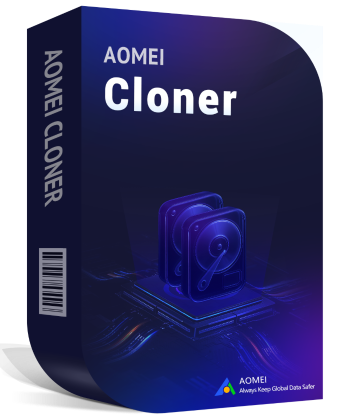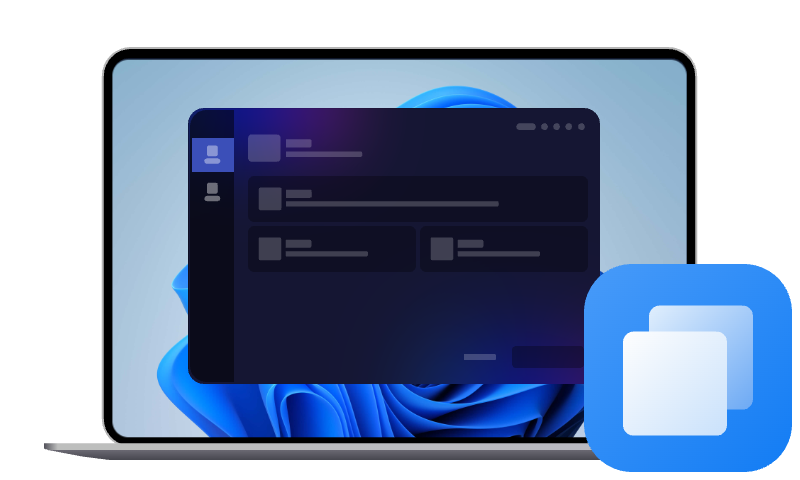Is It Better to Clone or Image a Hard Drive? Get Answer Here
Is it better to clone or image a hard drive? Scroll down to learn about the pros and cons of disk imaging and cloning, how to choose between them in different scenarios, and the best ways for cloning a hard drive image or creating a disk image.
When your hard drive starts running low on space, shows signs of failure, or you simply want to upgrade to a faster SSD, the first question that pops up is - Is it better to clone or image a hard drive? Both methods are designed to safeguard your data, but they work in very different ways.
Below, we'll explore disk imaging vs disk cloning in detail, highlight their advantages and disadvantages, helping you make an informed decision in need.
Detailed Info on Cloning a Hard Drive
Before we dive into imaging, let's start with cloning, which is often the go-to method when people want to move OS to a new drive quickly.
What is Disk Cloning?
Disk cloning is the process of creating an exact one-to-one copy of your entire hard drive, including the operating system, installed programs, system files, settings, and personal data. Unlike simple file copying, cloning replicates everything, even hidden partitions and boot sectors.
Essentially, you’re duplicating the drive in its entirety so that the cloned drive can immediately replace the original and function the same way without any extra setup. For example, if you migrate your Windows 10 installation or transfer entire C drive to a new SSD, you can simply clone, plug in the new drive, and then start using it immediately - no reinstallations or complicated setups.
What are the Advantages & Disadvantages of Cloning a hard drive?
Like every method, disk cloning comes with its ups and downs. The advantages of disk cloning include:
✅ Immediate usability: The cloned drive is ready to boot up and use without additional restoration steps.
✅ Perfect for drive upgrades: If you’re switching from an HDD to an SSD, cloning makes the transition seamless.
✅ Time-saving: Since cloning creates a direct copy, the process is generally faster than imaging.
So what are the disadvantages of cloning a hard drive? These include:
⭕ Storage requirements: You cannot clone hard drive to smaller SSD unless using advanced tools with intelligent cloning.
⭕ Limited flexibility: A clone is tied to the size of the destination disk and cannot be compressed.
⭕ Not ideal for long-term backups: A clone is a snapshot in time, but it doesn’t offer multiple restore points like imaging does.
⭕ Cloning a failing drive can be risky: If the source drive has serious errors, those issues may be transferred to the new disk.
Easiest Way to Clone Hard Drive - AOMEI Cloner
When it comes to cloning, AOMEI Cloner is a reputable tool that is designed for both home and professional use. It supports HDD-to-SSD and SSD-to-SSD cloning, and ensures bootable results, so your system can start up instantly from the cloned drive.

- Flexible clone - You can choose System Clone to move just the OS, Disk Clone to copy your entire disk, or Partition Clone to copy a specific partition of the disk.
- Intelligent clone - It allows only copying used sectors, saving time and space; it also allows sector-by-sector cloning for an exact replica, copying all used and unused space.
- SSD alignment - It helps to optimize performance and extend SSD lifespan.
With this software, you can clone hard drive with bad sectors, as well as clone hard drive to larger drive/smaller drive. For how to clone hard drive in Windows 10, simply download and install it on your computer, go to Clone > Disk Clone, and then you begin the cloning process easily.
Detailed Info on Imaging a Hard Drive
Now, let’s talk about imaging, which offers more flexibility in data storage and backup.
What is Disk Imaging?
Cloning vs imaging disk, disk imaging here is the process of creating a compressed backup file (an image) of your hard drive. Instead of duplicating everything to another drive immediately, imaging saves the entire disk into a single file, which you can restore later onto the same or a different drive. Think of it as taking a snapshot of your system. This image can be stored on an external drive, NAS, or even the cloud, making it a powerful backup solution.
What are the Advantages & Disadvantages of Imaging a hard drive?
Advantages of disk imaging include:
✅ Space efficiency: Images can be compressed, saving storage space.
✅ Multiple backups: You can create several images at different times, offering restore points.
✅ Flexible storage: Images can be stored on external drives, NAS devices, or cloud storage.
✅ Great for disaster recovery: If your system crashes, restoring from an image gets everything back to normal.
Disadvantages of disk imaging include:
⭕ Not instantly bootable: You need to restore the image before it can function as a bootable system.
⭕ Slower Process: Creating and restoring images takes more time compared to cloning.
⭕ Restoration required: A failed restore process may result in data loss if the image is corrupted.
Free Way to Create Disk Image on Windows 11/10
Windows includes a built-in tool called Backup & Restore, which allows you to create system & disk images on Windows 10/11 without needing third-party software. While not as advanced as specialized programs, it’s a straightforward option for many users.
This tool can create full system images, including system files, applications, and settings, and it allows scheduling for regular backups. You can use it to create backup images to both local drives and network locations.
To create a disk image, open Control Panel > System and Security > Backup and Restore (Windows 7) > Create a system image > choose the location to save the image, then select the drives to include in the backup, and click Start backup.
Is It Better to Clone or Image a Hard Drive?
Now that you know what each method does, here’s where the real debate comes in: disk imaging vs cloning, which is better? The answer depends on your goal.
- Cloning is better when upgrading or replacing your drive. You want the new disk to boot immediately without hassle.
- Imaging is better when setting up a long-term backup plan. You want multiple restore points, storage efficiency, and flexibility.
And for what are the differences between cloning vs copying hard drive, here is a comparison table:
|
|
Bootability |
Flexibility |
Best For |
|
Disk Cloning |
Immediately bootable once cloning is done. |
👍 Faster for one-time migration (e.g., HDD → SSD). 👎 Limited to direct disk-to-disk duplication. |
Drive upgrades, replacing HDD with SSD, and creating ready-to-boot duplicates. |
|
Disk Imaging |
Not bootable by itself; must be restored to a drive first. |
👍 Can be stored on external drives, NAS, or cloud and restored multiple times. 👎 Slower since it compresses and saves data as an image file. |
Long-term backups, archiving multiple versions, and disaster recovery. |
FAQs about Imaging or Cloning a Hard Drive
#1. Does cloning a drive make it bootable?
Yes. A properly cloned drive is bootable, provided you include the boot partition and system files.
#2. What to do before cloning a hard drive?
- Backup important files.
- Defragment the source drive (if HDD).
- Check disk health for errors.
- Ensure the target disk has enough space.
#3. How long does it take to clone a 1TB hard drive?
On average, cloning a 1TB hard drive takes between 1-3 hours, depending on the hardware speed and method used. SSDs and faster connections like SATA III or NVMe can significantly reduce the time.
#4. Does cloning a drive delete the original?
No. Cloning simply copies data; the source drive remains intact unless you choose to format it afterward.
#5. Should I clone a failing hard drive?
It depends. If the drive is only slightly degraded, cloning can work. However, if it’s severely failing, cloning may transfer corrupted sectors. In such cases, it’s better to use imaging with specialized tools that can skip bad sectors.
To Sum it Up
So, is it better to clone or image a hard drive? The answer depends on your needs.
- If you want to upgrade to a new drive and need it to be instantly bootable, cloning is the way to go.
- If you want to prepare for long-term data protection and have multiple recovery points, imaging is the better option.
Or, you can apply both to keep your data safe. For a simple and secure disk clone, don't forget to try AOMEI Cloner, which enables you to clone HDD to smaller SSD or larger SSD effortlessly.

